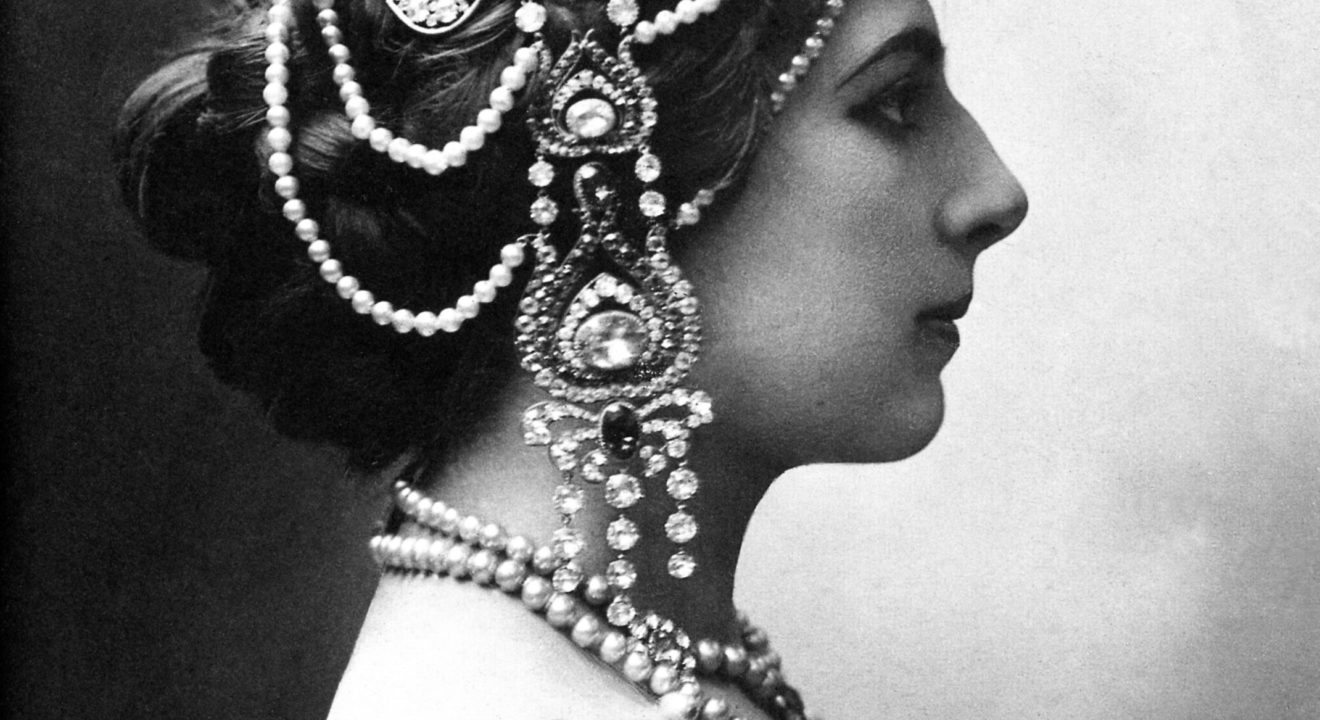Inspiration November 22, 2016


Mata Hari was the queen of reinvention. If alive today, she would probably tell you that she is an Indonesian princess who mastered the art of dance and Hindu rituals. In reality, Mata Hari, whose birth name was Margaretha Geertruida Zelle, was born in Leeuwarden, The Netherlands in 1876.
The daughter of a hat maker-turned-oil investor and a Javanese mother, the exotic beauty lived a lavish lifestyle, acquiring her very own goat-drawn carriage at the age of six. However, her family went bankrupt in 1889 when her father made several bad investments. Her mother died two years later, which caused a division between her father and brothers, forcing her to live with her godfather, Mr. Visser, in Sneek, a town south of Leeuwarden.
During her stay with her godfather, she attended trained to be a teacher, but when the headmaster, Wybrandus Haanstra pursued her romantically, the couple experienced a humiliating scandal and Margaretha was subsequently expelled. She went to live with her uncle, Mr. Taconis, in The Hague.
At 18, while still living with her uncle, Margaretha answered a personal ad seeking a wife for Rudolf MacLeod, a mustachioed, alcoholic military captain stationed in the Dutch East Indies who was 21 years her senior. The ad was originally a joke concocted by MacLeod’s friend, but once he saw the beautiful picture Margaretha sent, MacLeod was captivated. They married four months later.
The marriage was extremely arduous due to MacLeod’s alcoholic, abusive and jealous ways and Margaretha’s youth. In their nine years of marriage, the two gave birth to a son (who was poisoned by the maid at the age of two) and a daughter. For several years, the family lived in Java and Sumatra, where Margaretha would become enraptured by the culture, particularly the ways in which the women danced. However, the couple’s rocky marriage ended in the early 1900s with MacLeod taking custody of their daughter and Margaretha moving to Paris for a fresh start.
In Paris, she took to dancing under the stage name Lady MacLeod and later Mata Hari, or “eye of the day” in Malay. Her exotic dancing style – which was in vogue at the time – and shows which included her seductively stripping soon solidified her status as the toast of Paris. She was invited to all the best parties and caught the attention of military men of all nationalities.
One reporter in Vienna praised Mata Hari as “slender and tall with the flexible grace of a wild animal, and with blue-black hair.” Another called her “so feline, extremely feminine, majestically tragic, the thousand curves and movements of her body trembling in a thousand rhythms.” Garnering all this attention, Mata Hari was paid handsomely by military captains and officers seeking the pleasure of her company. This attention and new wealth made her one of the most sought-after courtesans in Paris.
As she began to age and the demand for younger women increased, Mata Hari traveled through Europe to pay visits to her powerful military clients. However, with the outbreak of WWI, this raised many speculative eyebrows and caused rumors that she was a spy.
Returning to Paris, Mata Hari fell in love with a younger, partially blind Russian captain serving in the French army. While visiting him in the hospital, a French counterintelligence officer intercepted her. Knowing that she was suspected of spying, he asked her to use her high- powered military contacts as a spy for France. She agreed only for the money in order to support her new love.
From there, everything went up in flames. After she gave the French government outdated and ultimately useless information, she was suspected of being a double agent for Germany and tried in a private trial in 1917. She pleaded her innocence, admitting that she was a courtesan but not a spy. She told the court, “I have always lived for love and pleasure.” Soon, however, after admitting that she had taken money from Germany, it became clear that she couldn’t keep her story straight and was convicted and sentenced to death by firing squad.
An account given by Henry Wales, the British reporter documenting her execution, perfetly characterizes Mata Hari’s strength and poise, even on the morning of her death. He writes, “She arose and took the long black velvet cloak, edged around the bottom with fur and with a huge square fur collar hanging down the back, from a hook over the head of her bed. She placed this cloak over the heavy silk kimono which she had been wearing over her nightdress.Her wealth of black hair was still coiled about her head in braids. She put on a large, flapping black felt hat with a black silk ribbon and bow. Slowly and indifferently, it seemed, she pulled on a pair of black kid gloves.”
She would not wear a blindfold and watching her executioners coolly, she said quietly, “I am ready.”
Mata Hari’s short but exceptional life as a wife, mother, exotic dancer and spy is one that redefined womanhood in the early 20th century and has inspired numerous films, books, plays and even a ballet.